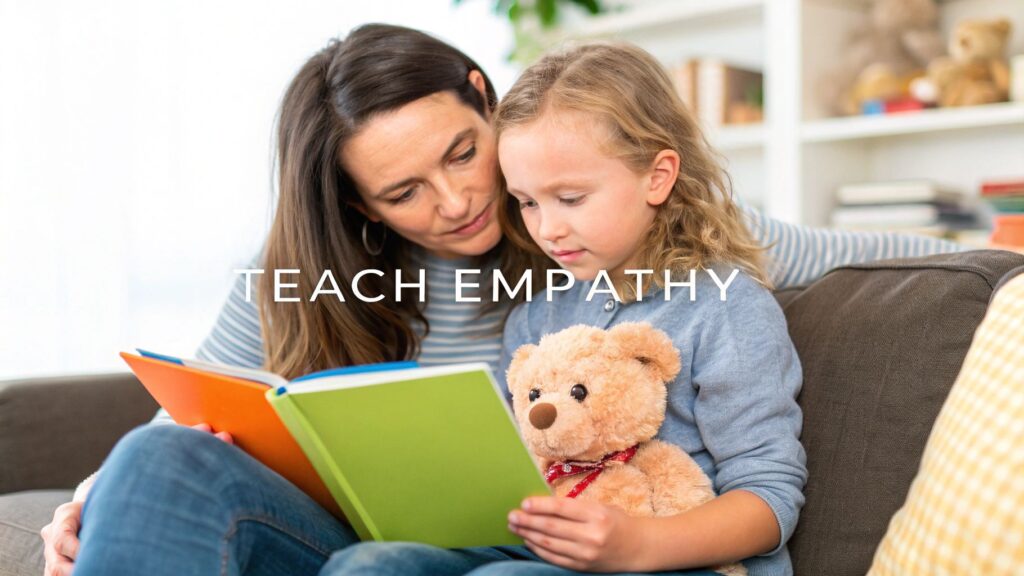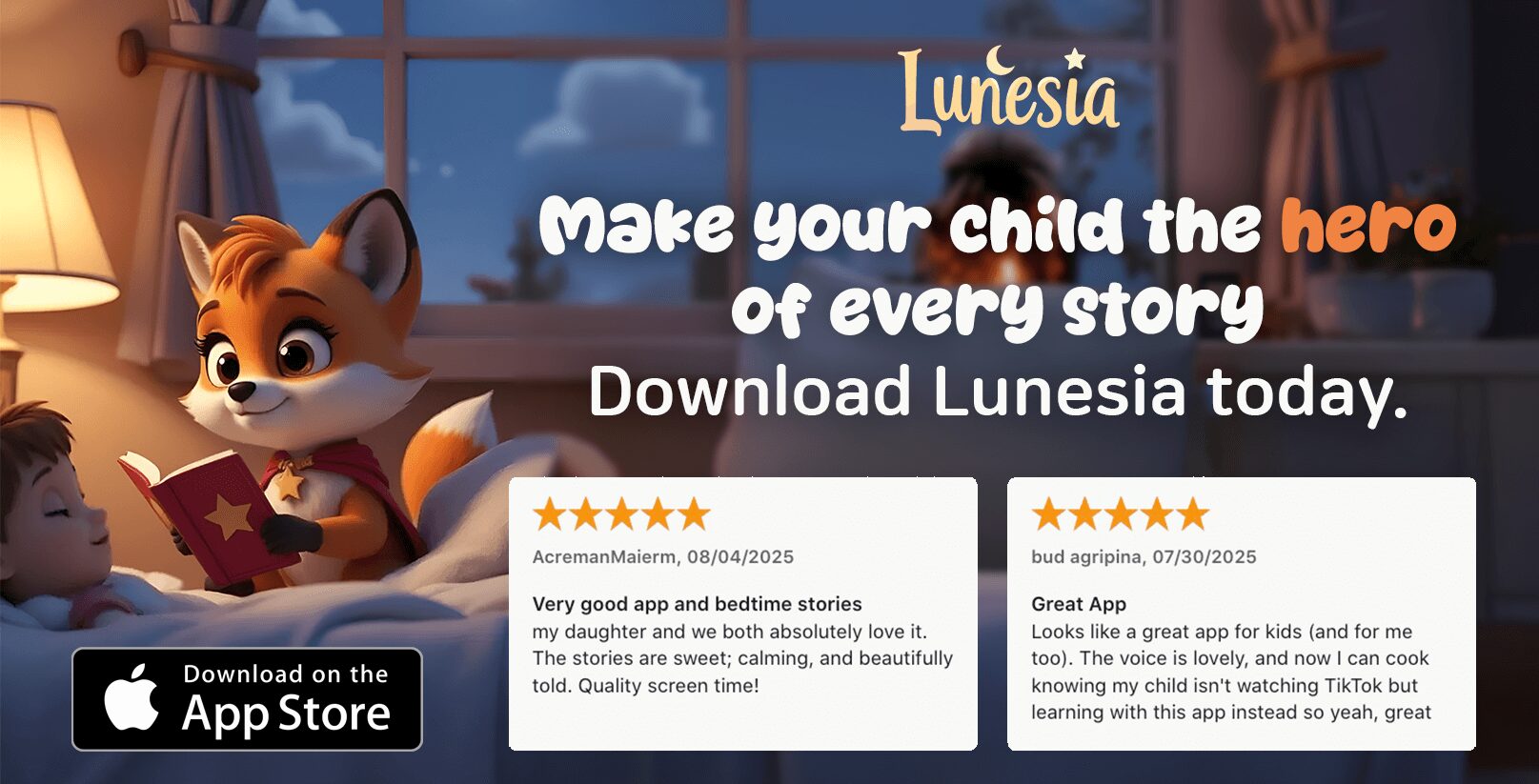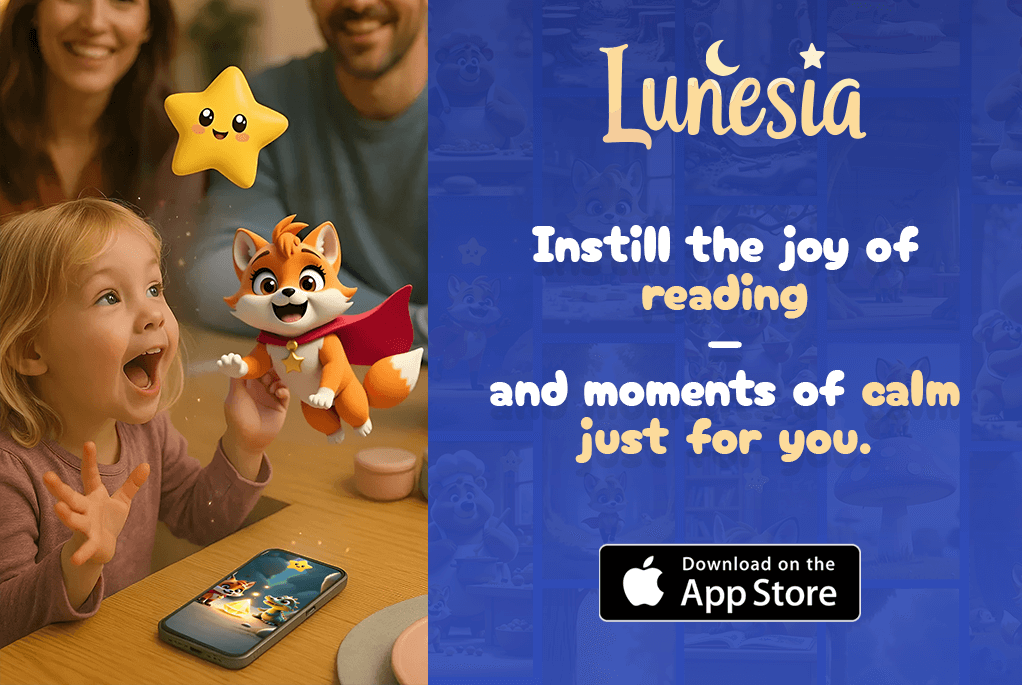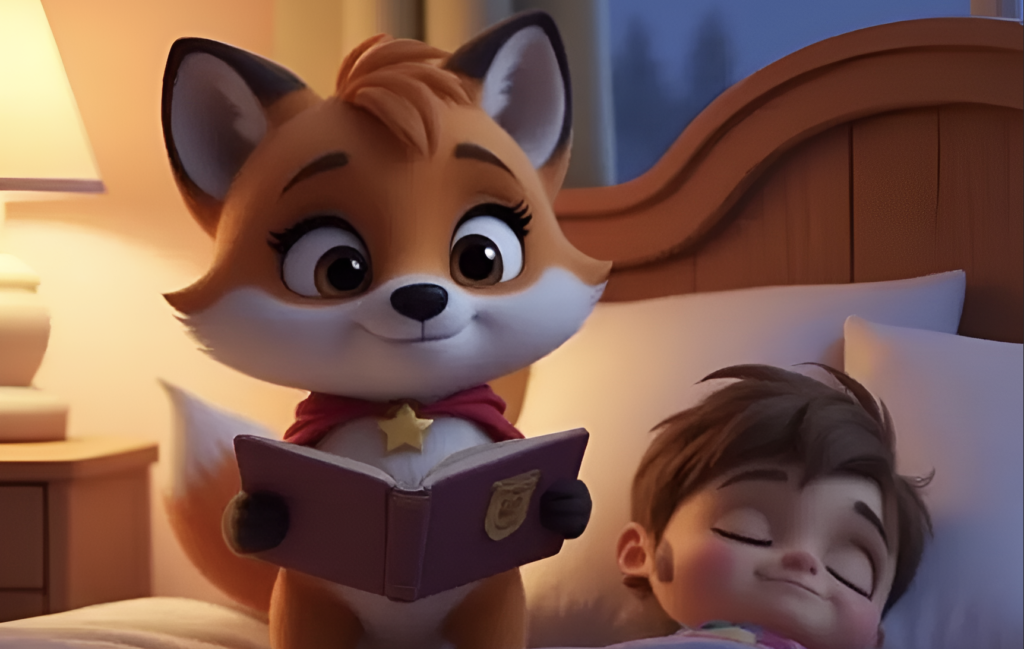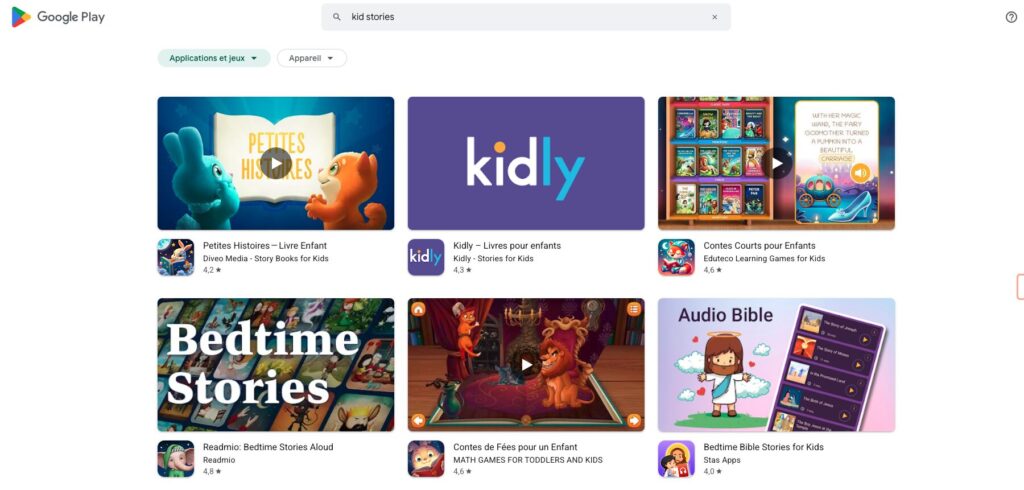Teaching kids empathy isn’t about some grand, formal lesson. It’s built in the small, everyday moments—the gentle reminders, the quiet conversations, and the way we act when we think they aren't watching. It all starts with modeling kindness and talking openly about feelings, turning ordinary interactions into powerful opportunities for connection.
Why Empathy Is Your Parenting Superpower
Have you ever wondered what the real secret is to raising a kind, resilient, and genuinely happy child? Forget the perfect discipline chart or a magically tantrum-free toddler. The true game-changer, the skill that underpins everything from making friends to navigating life's biggest challenges, is empathy.
Think of empathy as your child’s emotional compass. It’s that quiet, internal voice that allows them to imagine what it’s like in someone else’s shoes. What happens when a child develops this? A playground squabble isn't just about a stolen toy anymore; it becomes a chance to understand a friend's frustration. The sadness of a character in a storybook becomes a feeling they can actually connect with.
The Science Behind the Superpower
This isn’t just a nice, feel-good idea—it's a teachable skill with rock-solid benefits. Children who learn empathy don’t just become "nicer." They become better problem-solvers, more cooperative friends, and far more resilient individuals.
Pioneering programs like Roots of Empathy have shown that focusing on this one skill creates profound, long-term change. In schools with these programs, students not only become kinder but bullying behaviors drop significantly. You can read more about how empathy transforms school environments.
So, what does this actually look like in your day-to-day life? Imagine:
- Fewer Meltdowns: A child who understands their own feelings—and feels understood by you—is less likely to be swept away by them.
- More Cooperation: Empathy helps kids see beyond their own immediate wants. Suddenly, sharing and taking turns don't feel like a sacrifice, but a natural part of playing together.
- A Deeper Connection: When you actively teach empathy, you’re also strengthening your own bond. It builds a foundation of trust and mutual respect that lasts a lifetime.
"Every time you acknowledge your child's feelings, you’re giving them a building block for empathy. You're teaching them that emotions are valid, manageable, and a shared human experience."
This journey is all about reframing the tough moments. A tantrum isn’t just defiance; it's a cry for help from a little person drowning in feelings they can't yet name. A refusal to share isn't pure selfishness; it's an opportunity to gently talk about how our actions make others feel. You already have every tool you need to get started.
Turn Everyday Moments Into Empathy Lessons
What if I told you that you already have everything you need to teach empathy, and it doesn't involve flashcards or formal lessons? Your daily life—from messy sibling squabbles to a quiet moment on the park bench—is a goldmine of opportunities. The secret is learning to spot these moments and gently guide your child’s perspective.
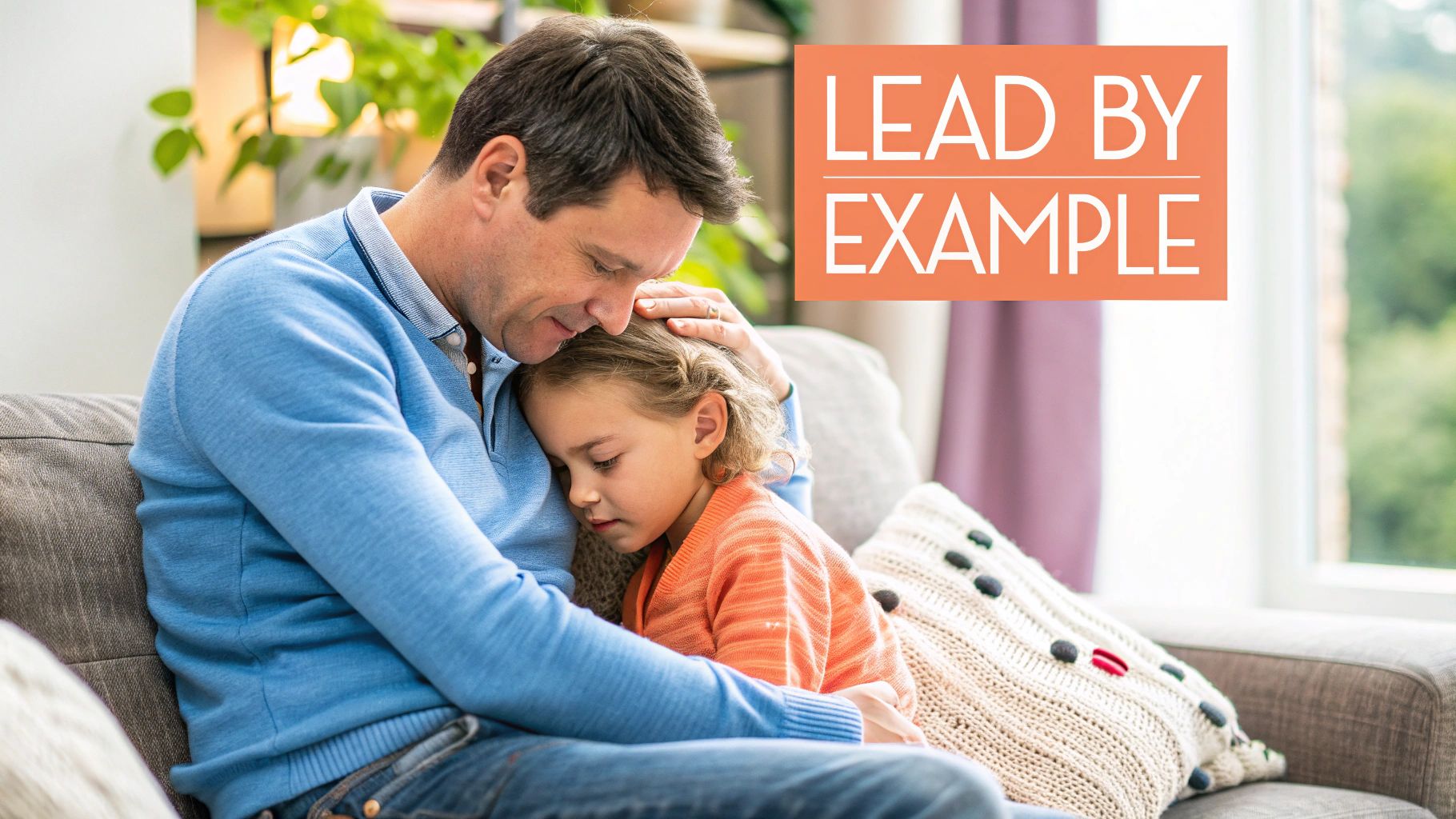
Let’s be honest, it’s easier to just say, “Stop crying!” or “Give that back!” But these knee-jerk reactions miss the magic. Instead of fixing the problem for them, what if we coached them through the feelings behind it?
This simple shift is the secret to making empathy a natural part of your family’s conversation. It's about turning chaos into connection.
From Conflict to Coaching
Picture this all-too-common scene: your child snatches a toy truck from their friend, who immediately starts wailing. This is a five-star opportunity. Your goal isn’t just to get the toy back but to help your child see the world through their friend’s eyes for a moment.
Instead of a scolding like, "That wasn't nice," try this gentle, three-step script:
- Acknowledge Their Want: Start with their world. "I see you really wanted that truck. It looks like so much fun."
- Narrate the Other Child's Feeling: Gently pivot. "Look at your friend’s face. He’s crying. Taking the truck made him feel very sad."
- Connect Action to Feeling: Bridge the gap. "When we take things without asking, it can make our friends feel sad. What could we do to help him feel better?"
This isn’t about shaming; it's about connecting actions to feelings. You're not just correcting a behavior—you’re building an emotional bridge.
A child’s brain is wired for connection, not correction. When we help them understand why their actions affect others, we give them a skill that lasts a lifetime.
Turning Screen Time Into Empathy Time
Now, what about those moments when you just need a break? The parental guilt around screen time is real. But what if you could turn that time into a powerful empathy-building tool, free from ads and distractions, that helps you raise a kinder human?
This is where an app like Lunesia changes the game. Lunesia’s interactive stories aren’t just a passive distraction. They place your child at the center of the adventure, where they have to make decisions that impact the characters and the outcome.
- Does the little squirrel share his nuts with the hungry hedgehog?
- Does the brave knight help the dragon who is scared of the dark?
By making these choices, children safely explore different perspectives and see the immediate consequences of their actions. They're not just listening to a story about kindness; they’re practicing it.
For parents, this is a guilt-free win. Your child is immersed in a safe, meaningful adventure that builds their emotional intelligence, while you finally get that precious time to breathe. For more ways to integrate these values, check out our favorite kindness activities for preschoolers.
Building Empathy Through the Magic of Stories
Ever noticed how a child’s entire world can shrink down to the size of a picture book in your lap? That magical space isn’t just for learning words and colors; it’s one of the most powerful empathy-building tools you own. Bedtime stories do more than soothe—they transport your child directly into someone else’s shoes, letting them feel a character’s joy, fear, or sadness from the absolute safety of your arms.
But how do you turn a simple story into a profound lesson in understanding feelings? The real magic happens when you pause and wonder together.
When you read about a lonely bear, you can whisper, "Oh, that bear looks so sad. How do you think he’s feeling in his heart right now?" This simple question is the key. It invites your child to look beyond the pictures and consider the inner world of another being. You’re teaching them to flex their empathy muscles by making it a habit to wonder about others.
From Passive Listening to Active Choosing
Traditional stories are fantastic, but what if your child could do more than just listen? What if they could step into the story and make choices that mattered?
This is where interactive storytelling creates a much deeper impact. Imagine an adventure where your child decides if the hero shares their last piece of bread with a hungry traveler. In the Lunesia app, this isn't just a hypothetical question. Their choice directly shapes the story, showing them the immediate, positive outcome of a kind action.
This active participation is the difference between hearing about kindness and practicing it.
The chart below shows just how impactful this kind of active participation can be in developing these crucial skills.
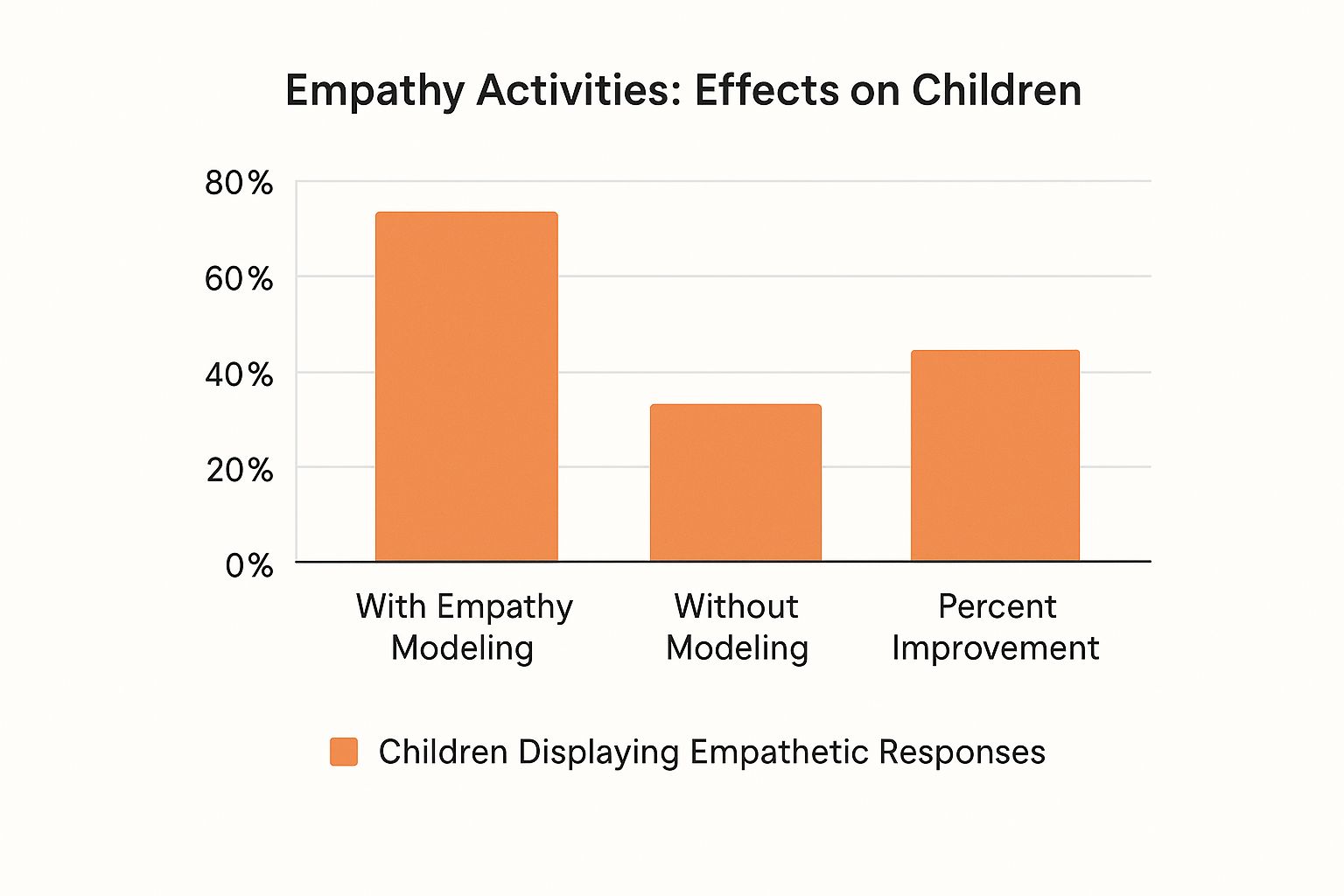
As you can see, actively engaging children in empathetic scenarios dramatically improves their social responses and cooperation with peers. It’s a hands-on approach to learning compassion.
Traditional Storytelling vs Interactive Lunesia Adventures
Not all story experiences are created equal when it comes to building empathy. A traditional, linear story is a wonderful starting point, but interactive adventures take that learning to a whole new level by putting the child in the driver's seat. Here’s a quick look at the difference.
| Feature | Traditional Bedtime Story | Lunesia Interactive Adventure |
|---|---|---|
| Child's Role | Passive Listener | Active Participant & Decision-Maker |
| Empathy Building | Discussing a character's feelings | Practicing empathy through choices |
| Outcome | Story has a single, fixed ending | Child's choices directly shape the outcome |
| Key Skill | Comprehension & Observation | Problem-Solving & Consequence Awareness |
While classic books are irreplaceable, interactive stories provide a safe "sandbox" where kids can experiment with social and emotional skills, seeing the direct results of their kindness and courage in a way that truly sticks.
The Bonus Benefits of Story-Driven Empathy
When you use stories to build empathy, you’re nurturing more than just social skills. Research from the University of Cambridge found that exploring diverse perspectives through stories also boosts a child's creativity and emotional awareness. It’s a powerful combination that prepares them for a complex world.
With Lunesia, these benefits are wrapped in a world designed for them—and for you. Each story is an ad-free, safe adventure that teaches courage, kindness, and problem-solving.
While your child is busy being the hero of a meaningful story, you get a moment of peace. It's guilt-free time for you, knowing they aren't just being entertained; they’re growing into a more compassionate and resilient person.
These value-rich journeys aren’t just a supplement to your parenting; they’re a powerful partner. They give your child a safe space to practice navigating big emotions and complex social situations, one magical adventure at a time. To dive deeper into this method, you can learn more about how storytelling builds empathy in children.
Helping Your Child Name and Tame Big Emotions
Has a sudden tantrum over a broken crayon ever left you feeling completely bewildered? We’ve all been there.
Those huge meltdowns, sudden fears, and baffling outbursts aren’t signs of a “naughty” child. They’re the raw, unfiltered expression of a little person completely overwhelmed by emotions they don’t yet have words for.
Before a child can feel empathy for someone else’s sadness, they first need to understand their own. This is where you, as their parent, become their most important emotional coach. You’re not just managing behavior; you’re building their emotional literacy, one feeling at a time.
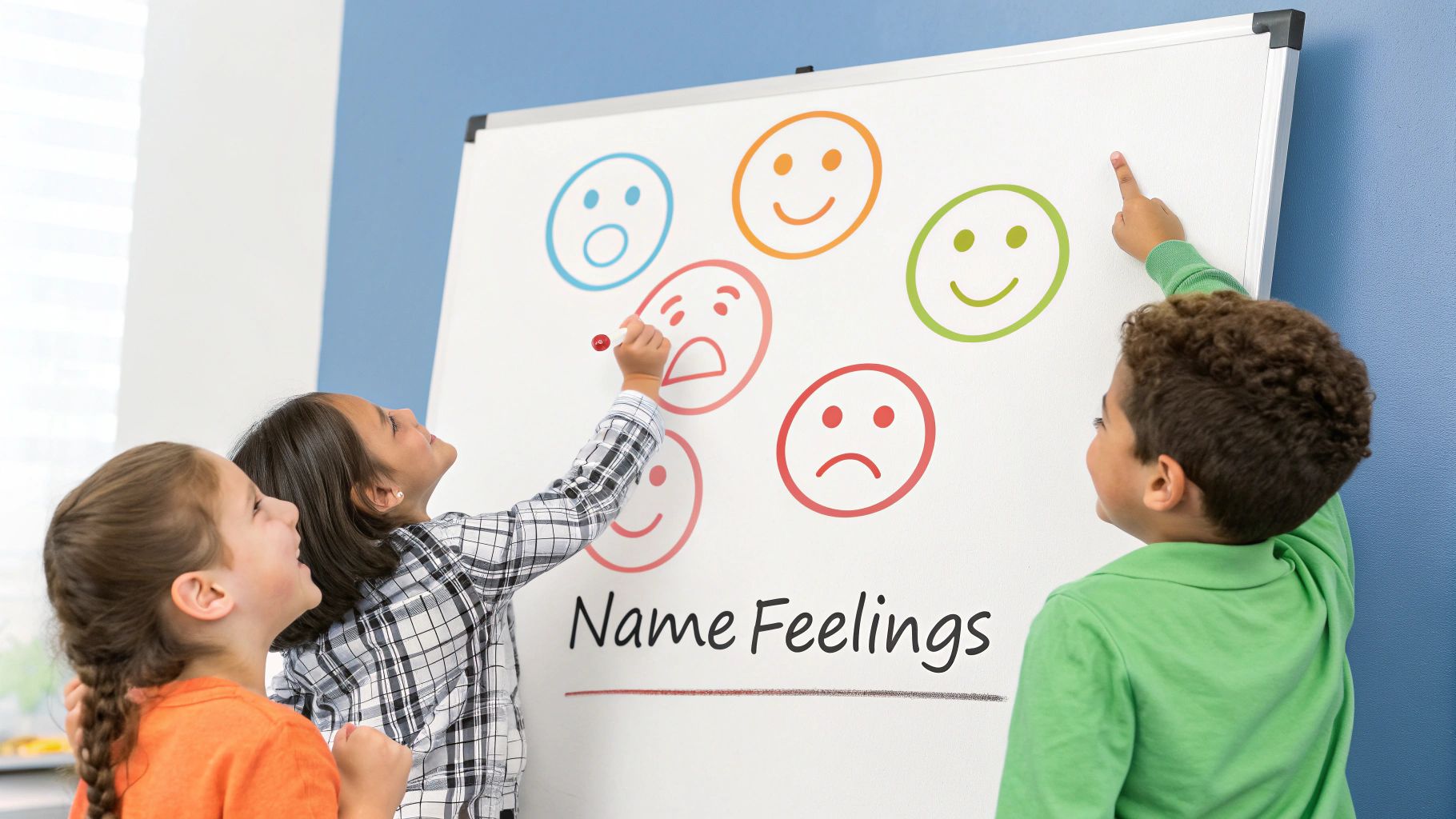
Name It to Tame It
The most powerful tool in your toolkit is a simple one: give the feeling a name. When your child is red-faced because their block tower crashed, get down on their level. Look them in the eye and say, “You are so frustrated right now! It’s really disappointing when your hard work falls down.”
You aren’t excusing a tantrum; you are validating the feeling behind it. This simple act does two incredible things:
- It helps your child feel seen and understood, which often calms the storm faster than anything else.
- It builds their “feelings vocabulary,” giving them the words they’ll need to express themselves better next time.
By naming the emotion, you give your child power over it. A feeling that has a name is a feeling that can be managed. An unnamed feeling is just a scary, overwhelming storm.
Practicing Emotions in a Safe Sandbox
So, how do you teach a child to handle complex feelings like fear, jealousy, or disappointment without waiting for a real-life crisis? This is where stories become an emotional playground.
The interactive adventures in the Lunesia app are designed to be a safe "sandbox" for feelings. In one story, a character might be afraid to cross a rickety bridge. Your child doesn’t just listen; they make a choice. Do they help the character find courage?
This active participation helps them practice emotional regulation and build resilience in a low-stakes environment. And the science backs this up.
A large-scale international study involving 900 students showed that a targeted empathy training program led to significant improvements in emotional awareness and behavior in just one school term. Students’ average empathy scores jumped from 5.55 to 7.00, showing that dedicated practice truly works.
Lunesia provides this kind of practice, turning screen time into a meaningful learning experience. As your child navigates these value-rich journeys, they're not just being entertained; they’re learning to name and tame their own big emotions.
For parents, this is the ultimate peace of mind: while you get a much-needed break, your child is safe, engaged, and growing into a more emotionally intelligent person. To explore this topic further, check out our complete guide to emotional regulation in toddlers.
Modeling Empathy: Your Most Important Role
What’s the single most powerful tool you have for teaching empathy? It isn’t a book, a game, or a special lesson plan.
It’s you.
Your child is a world-class observer, learning more from how you handle stress, talk about others, and apologize for your own mistakes than from anything you explicitly say. They’re watching. Always.
They see you when the barista gets your coffee order wrong or when another driver cuts you off in traffic. Do they see frustration and anger bubble up? Or do they see you take a deep breath and offer a little grace? These tiny, everyday moments are the real classroom for empathy.
This isn’t about being a perfect parent—far from it. It’s about being an authentic one. When you lose your patience and snap, you have a golden opportunity to teach.
An apology like, "I’m sorry I raised my voice. I was feeling frustrated, but that wasn’t the right way to show it," is a masterclass in emotional accountability.
Your Actions Speak Louder
Modeling empathy isn't about grand, sweeping gestures; it's woven into the very fabric of your daily life. Think about the small, consistent ways you can put it on display:
- Toward Your Partner: Let your child overhear you saying, "You seem really tired today. Let me handle bedtime so you can rest."
- Toward Strangers: When a cashier seems stressed, you could whisper to your child, "She looks like she's having a tough day. Let's make sure we give her a big smile."
- Toward Yourself: Instead of harsh self-criticism, practice self-compassion out loud. "Oops, I burned the toast! That's okay, everyone makes mistakes. We'll just try again."
These simple actions send a powerful, clear message: everyone’s feelings matter, including your own.
Your child will learn how to treat others by watching how you treat yourself, your family, and the people in your community. Your compassion sets the emotional thermostat for your entire home.
The Guilt-Free Pause That Fuels Your Empathy
Let's be real: modeling empathy is exhausting when your own cup is empty. You can't pour from a depleted well, and the relentless demands of parenting can leave anyone drained.
This is where taking a strategic, guilt-free pause isn't just a luxury—it's a necessity. For parents to effectively model empathy and be truly present, it’s helpful to explore strategies for balancing work and family life.
And this is precisely why Lunesia can be such a powerful partner. When you open the app, you’re not just handing your child a distraction. You’re giving them a safe, ad-free world where they can immerse themselves in stories that actively build their character.
While they’re busy learning about courage and kindness, you get that precious, restorative time for yourself.
Imagine reclaiming 20 minutes to enjoy a hot coffee, knowing your child is engaged in a meaningful adventure that reinforces the very values you’re working so hard to teach. It’s a true win-win that allows you to return to parenting feeling recharged, refreshed, and ready to be the empathetic role model your child needs.
Of course, as you start this journey, a million questions are probably swirling around in your head. That's completely normal. You’re guiding your child through one of the most important parts of their development, and every parent wonders if they’re getting it right.
Let's sit down and tackle some of the most common worries together.
"My Toddler Hits and Snatches Toys. Does This Mean They Lack Empathy?"
Does this sound familiar? You're at the park, and your sweet two-year-old suddenly turns into a toy-snatching tornado. It’s easy to feel a hot flash of embarrassment and wonder, "Am I raising a tiny villain?"
Let me put your mind at ease: absolutely not! This is one of the most developmentally appropriate—and common—behaviors for this age.
At two or three, a child’s world revolves almost entirely around their own immediate needs and wants. They haven't yet developed the complex cognitive skills to understand that other people have separate thoughts and feelings. Hitting or grabbing isn’t malicious; it’s a pure, unfiltered impulse.
Your role here isn't to punish but to be their "feelings coach."
- Step in gently but firmly: "We use gentle hands."
- Narrate what's happening for everyone: "You felt so frustrated that your friend had the block you wanted. It also made him feel very sad when you took it from him."
This simple act of voicing both sides of the emotional coin is the first, crucial seed you plant in building an empathetic heart.
"How Can I Teach Empathy to a Very Shy or Anxious Child?"
What if your child is so sensitive that the big feelings of others are just too much to handle? For a shy or anxious little one, being pushed to engage with a crying friend can feel incredibly overwhelming, causing them to retreat even further.
The key here is to start in a safe, controlled space where they feel secure.
And this is where storytelling becomes your superpower.
For a shy child, stories are like an empathy flight simulator. They can safely explore complex social situations—a sad dragon, a lonely knight—without the pressure of a real-time, face-to-face interaction.
With a book or an app like Lunesia, they can practice seeing things from another's point of view from a comfortable distance. You can start small, celebrating moments when they show concern for a pet or a hero in a tale. This builds their confidence and gives them the tools they'll need for real-world situations down the road.
"Can Screen Time Actually Help Teach Empathy?"
Ah, screen time—the ultimate source of modern parental guilt. Could it actually be a force for good in teaching something as human as empathy?
The answer is a resounding yes, but with a huge caveat: the quality of that screen time makes all the difference. Mindlessly watching chaotic cartoons isn't going to move the needle.
Interactive, high-quality content, on the other hand, is a game-changer. This is precisely where an app like Lunesia shines. Unlike passive shows, Lunesia’s interactive adventures require your child to make decisions rooted in kindness and consideration. They see firsthand how their choices—like sharing food with a hungry bear or helping a scared friend—directly affect the story and its characters.
This transforms screen time from a simple distraction into an "empathy gym." It becomes a space where your child can actively practice social and emotional skills in a safe, ad-free world. When screen time is intentional and value-driven, it becomes a powerful and supportive partner in your parenting toolkit.
Ready to turn story time into an adventure in kindness and courage? With Lunesia, your child doesn’t just listen to stories—they become the hero. Discover a world of interactive tales that build empathy, resilience, and problem-solving skills, all while giving you a guilt-free moment to recharge. Start your Lunesia journey today and watch your child grow, one magical choice at a time.
